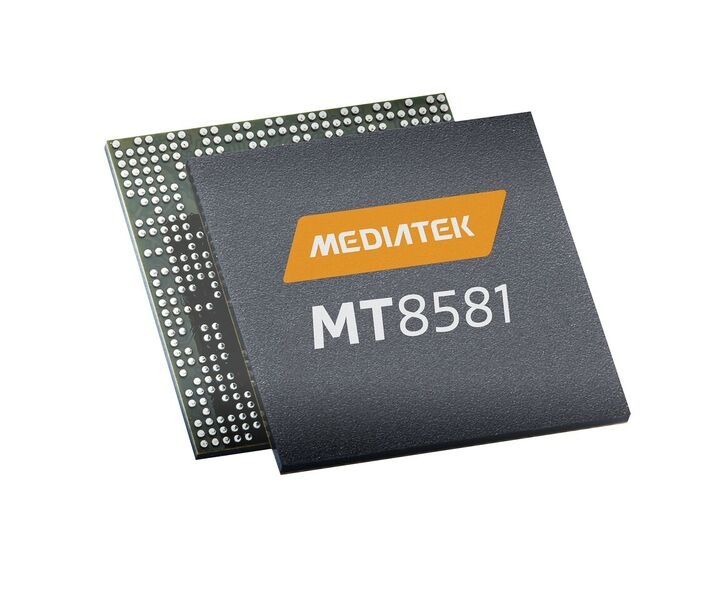MediaTek Debuts New Chips For Wearables, Smart Homes And Blu-Ray Players
In the months leading up to CES, my inbox was pounded daily with pitches about revolutionary, world's [fill in the blank] wearables, as well as the smartest, most secure, easiest-to-use, world's [fill in the blank] smart home solutions. Most of that is marketing bluster, and that's actually been a notable problem in those markets. There are too many problems unsolved, too many pretenders, and too much is proprietary.
MediaTek is well aware of all of this, but as a chip maker, it's working to resolve some of the above issues and also assert itself in those markets by underpinning any number of solutions. The company released the MT2523 SoC for smartwatches and other wearables and the MT7697 for smart home devices. (It also has the MT8581, a new Blu-ray SoC.)
For "Smartwatches," But Not Those Smartwatches
When you think "smartwatch," you usually think of high-powered, GUI-rich devices like the Apple Watch or Samsung's Gear watches. The MT2523 is not designed for those. Instead, it's aimed more at the type of "smartwatches" that Intel has been working on, such as the Basis smartwatch, or perhaps the Pebble. This latter type of smartwatch is designed more as a fashion accessory or timepiece first, and the tech is added second.
The strategy there is that people are more inclined to buy a timepiece that they would normally want to wear, as opposed to some geek chic smartwatch that just doesn't look sharp with a well-tailored suit. What Intel, and MediaTek, are trying to do is to add smart tech into those products. Thus is the raison d'être of the MT2523.
MediaTek told Tom's Hardware that the chip is designed for smartwatches, fitness trackers and other similar wearables with displays (but not GUI-rich ones), and it offers a Cortex M4-class CPU clocked up to 208 MHz at 1.3 V. Instead of an integrated GPU, the MT2523 sports fixed-function 2D hardware and can handle displays up to 320x320. It's built on the 55nm process.
"The display component supports MIPI-DSI and serial interfaces, resulting in a high-resolution mobile screen. It includes 2D capabilities of true color, per pixel alpha channel and anti-aliasing fonts, plus 1-bit index color to save memory and computing power,"read the press release.
The company claimed that this SoC is 41 percent smaller than the competition yet is efficient enough that it can offer battery life of about a week. It will have integrated RAM and flash. There will be versions of the MT2523 with and without GPS (a five-mode solution will include GLONASS, for example), and it will support dual-mode Bluetooth (BT and BT LE) and offer a power management unit (PMU). The sans-GPS version will measure 6.2 x 5.8 mm, and the version equipped with GPS is 9.2 x 6 mm.
Get Tom's Hardware's best news and in-depth reviews, straight to your inbox.
Generally, the MT2523 is designed to offer quick wake up and shutdown capabilities, which ostensibly conserves power.
MediaTek will be sampling device makers in Q1 2016, and we can expect actual devices running the MT2523 on the market within the first half of the year.
Connecting The Smart Home And The Smartphone
The second of MediaTek's trio of new chips is the MT7697, which actually serves as an IoT "bridge" to the MT7687. "The MT7687 is designed for connecting smart appliances and smart gadgets to Wi-Fi, whereas the MT7697 powers Wi-Fi and Bluetooth connections for smart gadgets and wearables," read the press release.
MediaTek indicated that these two chips, along with its smartphone SoCs, can work together in various devices for a fully-connected "life." Built with a Cortex M4 CPU, the MT7697 offers DB Wi-Fi, Bluetooth Low Energy (BLE) and CM4, and it has onboard RAM and a 10 decibel-milliwatts (dBm) power amp. The idea is that it can handle both short-range (BLE) and longer-range (Wi-Fi) connectivity in the home.
There's another version of the MT7697 coming, the MT7697D, that offers dual-band (2.4 GHz and 5 GHz) Wi-Fi.
Also, Blu-Ray
Although it's not exactly sexy, MediaTek announced an SoC for Blu-ray players. The company said that with the MT8581, it's the "only company with a dedicated chipset for Blu-ray players."
In any case, the MT8581 (built on 28 nm) supports UHD 4K and high-dynamic range (HDR).
Support includes:
Blu-ray, DVD and CD playback (including BD-Live and BonusView)Scale up to 4K from DVD, scale down to a non-4K screen4K (3840x2160) video decoding: HEVC, H.264 and VP9 4K 60p2K (1920x1080) video decoding: MPEG-2, VP8 and VC-1 2K 60pAudio decoding: Advanced Audio Coding (AAC), Dolby Digital, Dolby Digital Plus, Dolby TrueHD, DTS, and DTS-HD master audio
Mass production is slated for the second half of the year.
Seth Colaner is the News Director for Tom's Hardware. Follow him on Twitter @SethColaner. Follow us on Facebook, Google+, RSS, Twitter and YouTube.
Seth Colaner previously served as News Director at Tom's Hardware. He covered technology news, focusing on keyboards, virtual reality, and wearables.



